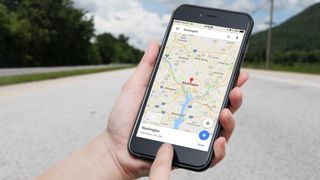Bouncing Back: A Comprehensive Guide to Identity Theft Recovery in 5 Steps
Identity fraud is a serious problem that can occur suddenly and without warning. If you become a victim of this crime, it can take months or even years to recover from the financial and emotional impact it can have. That’s why it’s essential that you know what steps you can take to speed up the recovery process.
Here are five steps you can take to counter the event if your identity is stolen and your financial life is seriously affected:
The long-term effects of identity theft
Identity theft is not a sudden event that you forget after a few months. Instead, its impact can last for months, if not years, casting a huge shadow over your life.
There is a psychological aspect to identity theft, one that can take its toll and cause you to conflict with everything you previously took for granted. Being victimized by criminals in this way can cause feelings of fear and violation. Sleep can also be affected – the Identity Theft Resource Center found that sleep disorders affect 41% of identity theft victims.
Fear of financial security, a sense of powerlessness and suicidal feelings are also common among victims of identity theft.
Of course, identity theft also has financial consequences for the victims. You will almost certainly be short of money for a while. Borrowing from family and friends, selling possessions to cover the costs of identity theft, and even taking out personal loans rarely make you feel better. On the contrary, the additional stress that borrowing brings can cause further psychological stress.
This can also translate into physical illness. Victims of identity theft have reported everything from difficulty breathing, increased blood pressure and heart palpitations to fatigue, muscle pain and even sadness (from loss of financial security, confidence and ambitions).
A timeline of identity theft recovery
Identity theft can rarely be recovered quickly. It largely depends on the type of theft you have experienced.
- Credit card fraud: the time it takes to spot and report the scam is, in most cases, as long as you have to wait. If you regularly check your credit card statements or receive alerts on your account, this should not be longer than a month. After that, credit card companies will cover the stolen credit.
- Total identity theft: accounts opened in your name can take months to recover. Reducing fraudulent bank accounts, loans and other identity thefts takes time. Proof is required that you did not create the accounts. Undoing the damage can take years if a tax debt also arises, as in some cases, or other crimes are committed in your name.
Unless you’re incredibly lucky and catch identity fraud early, you’ll likely spend at least a year dealing with the consequences of identity theft.
How to recover from identity theft
So how can you recover from identity theft and minimize the psychological impact?
1. Contact the fraud departments of the affected accounts
If you discover that your identity has been stolen and you become a victim of fraud, there are certain steps you should take to report the incident. First, contact the fraud department of the affected banks and credit card companies. You should also contact the finance company if the scam was related to car financing or another form of financing. In addition, it is important to report the theft to the local police as soon as possible. Ideally, all of these steps should be taken within 24 hours of discovering the fraud.
2. Check your statements and records
To ensure that you have a full understanding of the fraud that has occurred, it is important that you thoroughly review all your financial activity during the period in which the fraudulent activity occurred (and even some time before). This means taking the time to examine your bank statements and other financial records in detail. Additionally, be sure to request statements that may not have been sent to you. It’s also important that you check all your financial accounts, including banks, lenders and credit cards, as well as any online stores or PayPal accounts you may have used during that time.
3. Map your movements during the fraud period
If you suspect that fraudulent activity has occurred, it is important to take immediate steps to document your actions to prove your innocence and that you were not involved in the fraudulent activity. Unfortunately, victims of fraud often have to prove their innocence. You can use Google Maps to track your movements and locate where you were at a specific time. In addition, you may be able to find old receipts or your employer’s clock-in information to prove that you were at work when, for example, a loan was taken out at a bank branch.
4. Seek legal advice from an identity theft specialist
It is a good idea to contact an attorney and provide them with as much information as possible when it comes to fraud. Getting legal advice is crucial as your bank will be investigating you. However, don’t just contact your regular family law attorney. Instead, find someone who specializes in identity theft and fraud. They can work with your bank and any federal agencies involved, which can reduce the stress you may be experiencing.
5. Contact the Identity Theft Resource Center (ITRC)
There is a free counseling service available from the ITRC that can give you almost all the information you need about identity theft. They offer an extensive service and provide a detailed step-by-step plan on what to do if you are a victim of identity fraud. Moreover, you can find information about various scams that will help you identify the cause of your identity theft.
In addition, the website offers various tools, facts, figures and a regular newsletter.
Are you experiencing identity theft in Great Britain? Contact the Action Fraud Team.
Prevent future identity theft
You’ve overcome identity theft. You probably don’t want to go through it all again. To avoid a repeat of the months-long recovery of your identity, finances, and perhaps even your sanity and health, you need to take steps to secure your accounts.
Stop clicking on links in unsolicited emails from your bank, lender, PayPal or Facebook. Instead, learn to recognize fake emails, change your passwords, apply stricter security measures (two-factor authentication, which, for example, sends a code to your phone or email when you try to log into a bank account online), and stay watchful. of the risks. Know and understand how it happened the first time to reduce the chance of recurrence.


